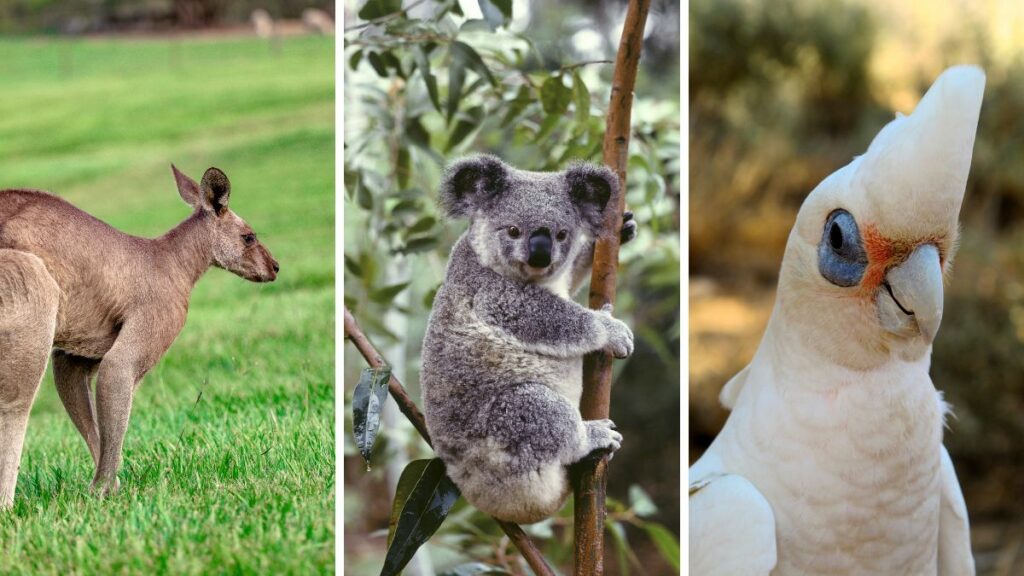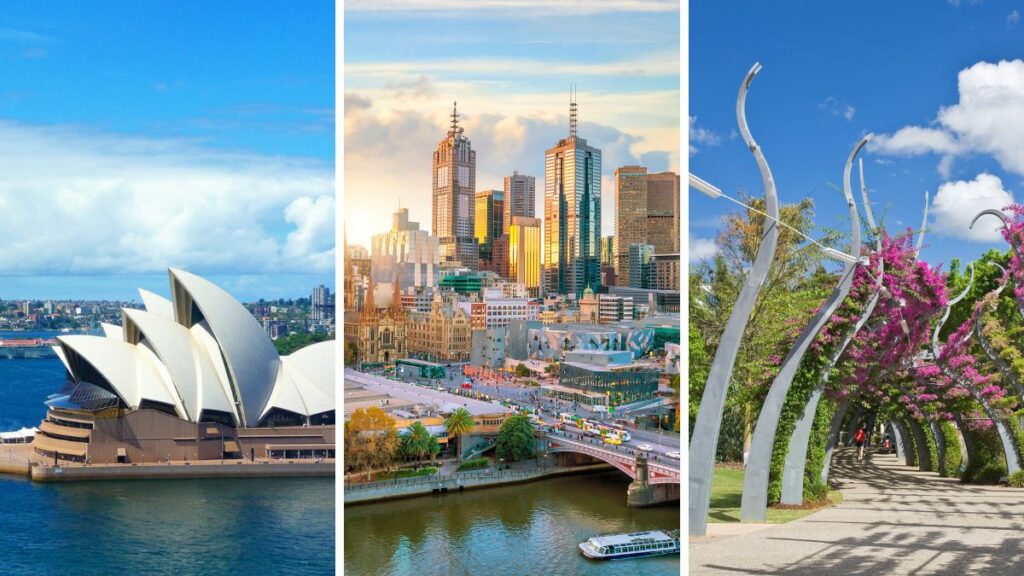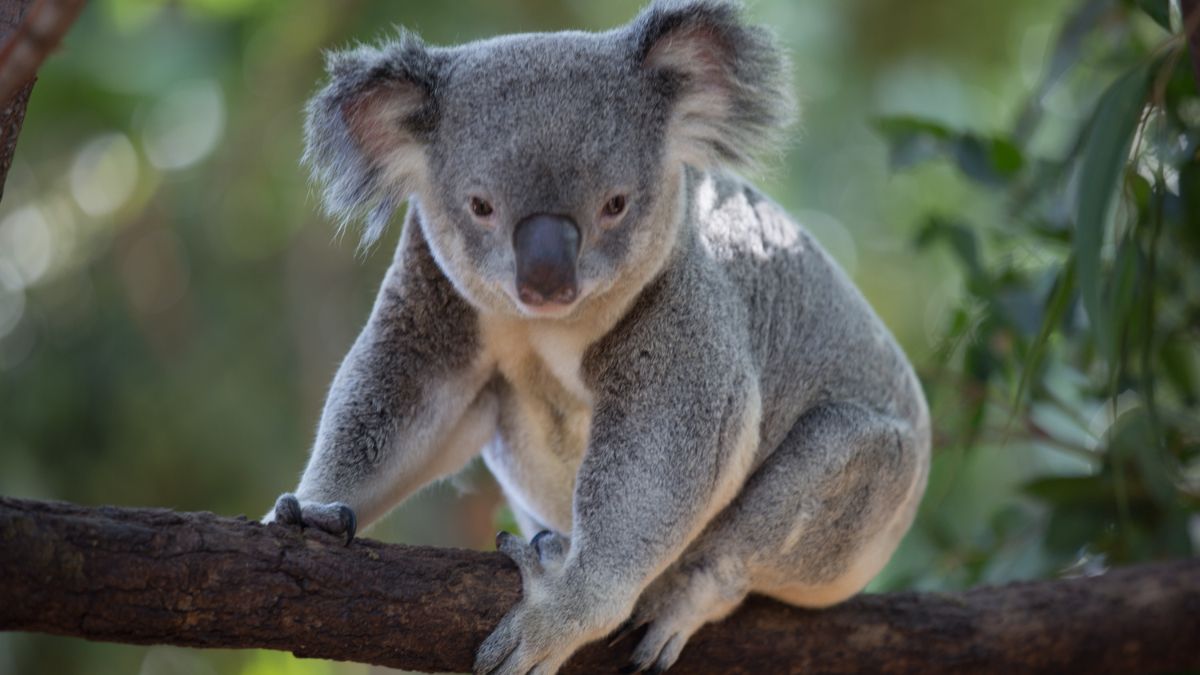What Is Australia Known For?
Australia, often referred to as the “Land Down Under,” is a country that stands out for its remarkable landscapes, unique wildlife, and vibrant culture. From the stunning Great Barrier Reef to the iconic Sydney Opera House, Australia’s diverse offerings have attracted millions of visitors and have left an indelible mark on the world’s imagination. In this article, we will explore the various aspects that make Australia a globally recognized and cherished destination.
1. Geographical Marvels

The Great Barrier Reef
Undoubtedly one of the most famous natural wonders, the Great Barrier Reef is the largest coral reef system on the planet. Stretching over 2,300 kilometers along the Queensland coast, this living structure is a paradise for marine enthusiasts, offering a mesmerizing world of vibrant corals, diverse marine life, and crystal-clear waters. The reef’s importance extends beyond its breathtaking beauty; it plays a crucial role in marine biodiversity and is recognized as a UNESCO World Heritage site.
| Great Barrier Reef Facts | |
|---|---|
| Total Area | 344,400 square kilometers |
| Number of Coral Species | Over 400 |
| Marine Species Diversity | About 1,500 fish species |
| Tourism and Conservation Efforts | Integral to local economy |
Uluru (Ayers Rock)
Located in the heart of the Australian Outback, Uluru, also known as Ayers Rock, is an iconic natural formation that holds immense cultural significance for the Indigenous people. This massive sandstone monolith rises abruptly from the desert landscape, creating a breathtaking sight, especially during sunrise and sunset when its hues change dramatically. The rock is not only a geological marvel but also a spiritual and cultural landmark for the Anangu people.
| Uluru Facts | |
|---|---|
| Height | 348 meters |
| Circumference | 9.4 kilometers |
| Indigenous Connection | Sacred site |
| UNESCO World Heritage Site | Designated in 1987 |
The Outback
Australia’s vast interior, known as the Outback, is a rugged and arid region that covers a significant portion of the country’s landmass. This stark and expansive landscape is characterized by its red earth, sparse vegetation, and unique wildlife. While challenging to inhabit, the Outback holds a mystique that has captured the imagination of adventurers and storytellers, becoming an integral part of Australia’s cultural identity.
2. Distinctive Wildlife

Kangaroos and Wallabies
When one thinks of Australian wildlife, kangaroos and wallabies often come to mind. These marsupials are unique to the continent and are known for their distinctive hopping movement. With their strong hind legs and muscular tails, kangaroos can cover great distances with remarkable agility. Wallabies, on the other hand, are smaller and typically found in forests and grasslands.
| Kangaroos and Wallabies | |
|---|---|
| Kangaroo Species | Red Kangaroo, Eastern Grey Kangaroo, etc. |
| Wallaby Species | Agile Wallaby, Red-necked Wallaby, etc. |
| Adaptations | Powerful hind legs, pouch for raising young |
Koalas
Koalas are another iconic symbol of Australian wildlife. These adorable marsupials are known for their eucalyptus diet, which gives them a distinct aroma. Despite their sleepy appearance, koalas are well adapted to their arboreal lifestyle and are skilled climbers. Unfortunately, koalas have faced habitat loss and other challenges in recent years, prompting conservation efforts to protect their populations.
| Koalas | |
|---|---|
| Diet | Eucalyptus leaves |
| Conservation Status | Vulnerable |
| Habitat | Eucalyptus forests |
Unique Bird Species
Australia boasts a diverse range of bird species, many of which are found nowhere else on Earth. The country’s isolation has led to the evolution of distinctive avian life, such as the colorful parrots, kookaburras known for their laughter-like call, and the emu, the world’s second-largest bird. The variety of birdlife in Australia contributes to the nation’s unique ecosystem.
3. Cultural Diversity and Indigenous Heritage

Aboriginal Culture
Australia’s Indigenous peoples have a rich cultural heritage that dates back tens of thousands of years. With over 250 distinct language groups, Indigenous Australians have diverse traditions, art forms, and spiritual beliefs. Dreamtime stories, which explain the creation of the land and its inhabitants, are central to Aboriginal culture and are passed down through generations.
| Aboriginal Culture | |
|---|---|
| Dreamtime Stories | Mythical narratives explaining creation |
| Art Forms | Dot paintings, rock art |
| Connection to Land | Spiritual significance |
Multicultural Society
Australia’s modern identity is shaped by its multicultural population. People from around the world have migrated to Australia, contributing to its vibrant and diverse society. Cities like Sydney, Melbourne, and Brisbane are melting pots of cultures, offering a wide array of cuisines, festivals, and traditions.
| Multicultural Society | |
|---|---|
| Migration Waves | European, Asian, Middle Eastern, African, etc. |
| Cultural Festivals | Diwali, Lunar New Year, Greek Festival, etc. |
| Culinary Diversity | Fusion of global cuisines |
Iconic Australian Foods
Australian cuisine is a reflection of its unique geography and cultural influences. From Vegemite, a yeast extract spread, to meat pies and lamingtons (sponge cake coated in chocolate and coconut), the country has its own set of iconic dishes. Indigenous ingredients like kangaroo and bush fruits are also finding their way into modern Australian cuisine.
| Iconic Australian Foods | |
|---|---|
| Vegemite | Savory yeast extract spread |
| Meat Pie | Baked pastry filled with meat and gravy |
| Tim Tams | Popular chocolate biscuits |
| Bush Tucker | Indigenous ingredients in modern dishes |
4. Thriving Cities

Sydney
Sydney, the capital of New South Wales, is a globally recognized city known for its stunning harbor, iconic landmarks, and vibrant culture. The Sydney Opera House and the Sydney Harbour Bridge are two of the city’s most recognizable structures. With its bustling arts scene, diverse neighborhoods, and beautiful beaches like Bondi and Manly, Sydney offers a dynamic urban experience.
| Sydney | |
|---|---|
| Sydney Opera House | Architectural masterpiece |
| Sydney Harbour Bridge | Steel arch bridge |
| Beach Culture | Bondi, Manly, Coogee |
| Festivals and Events | Vivid Sydney, Mardi Gras |
Melbourne
Often hailed as the cultural capital of Australia, Melbourne is known for its art, music, fashion, and food scene. The city is famous for its laneways adorned with street art, as well as its numerous galleries, theaters, and live music venues. Melbourne hosts various events and festivals, including the Melbourne International Comedy Festival and the Australian Open tennis tournament.
| Melbourne | |
|---|---|
| Street Art Capital | Laneways filled with vibrant murals |
| Coffee Culture | Home to numerous cafes |
| Sports and Events | Australian Grand Prix, Melbourne Cup |
| Multicultural Neighborhoods | Fitzroy, St. Kilda, Richmond |
Brisbane
Brisbane, the capital of Queensland, is a vibrant city known for its subtropical climate and outdoor lifestyle. The South Bank Parklands along the Brisbane River offer recreational spaces, cultural institutions, and stunning views of the city’s skyline. Brisbane’s proximity to the Gold Coast and Sunshine Coast adds to its appeal as a gateway to natural beauty.
| Brisbane | |
|---|---|
| South Bank Parklands | Riverside leisure and cultural precinct |
| Queensland Gallery of Modern Art | Contemporary art museum |
| River City | Brisbane River cruises |
| Natural Beauty | Access to Gold Coast and Sunshine Coast |
Perth
Perth, the capital of Western Australia, is renowned for its beautiful beaches, outdoor activities, and laid-back lifestyle. The city’s isolation on the western coast has fostered a unique local culture. Kings Park, one of the largest inner-city parks in the world, offers panoramic views of the city and the Swan River.
| Perth | |
|---|---|
| Beaches and Coastal Life | Cottesloe, Scarborough |
| Swan River | Iconic waterway |
| Western Australian Museum | Cultural and natural history exhibits |
| Mining Industry | Economic significance |
5. Economic Significance

Mining and Natural Resources
Australia is rich in mineral resources and is one of the world’s leading exporters of minerals such as iron ore, coal, gold, and bauxite. The mining industry contributes significantly to the country’s economy, providing employment and generating revenue for various infrastructure projects.
| Mining and Natural Resources | |
|---|---|
| Iron Ore | Major export commodity |
| Coal | Energy production |
| Gold | Precious metal export |
| Economic Impact | Employment, revenue |
Agriculture and Farming
Australia’s diverse climate and geography support a range of agricultural activities. The country is a major producer of commodities like wheat, wool, beef, and dairy products. Despite the challenges posed by arid conditions and periodic droughts, agriculture remains a vital sector of the economy.
| Agriculture and Farming | |
|---|---|
| Wheat | Staple food crop |
| Wool | Historical significance |
| Livestock | Beef, sheep, dairy |
| Sustainable Practices | Focus on water management |
Services and Tourism
The services sector, including finance, education, and tourism, plays a crucial role in Australia’s economy. The country’s natural beauty, diverse cities, and unique wildlife attract millions of tourists each year, contributing significantly to employment and revenue.
| Services and Tourism | |
|---|---|
| Tourism Industry | Major economic driver |
| Education Sector | International students |
| Financial Services | Sydney as a financial hub |
| Employment and Exports | Tourism-related revenue |
6. Sports and Outdoor Lifestyle

Cricket
Cricket holds a special place in Australia’s sporting culture. The sport has a rich history and a dedicated following. The Ashes series, a test cricket rivalry between Australia and England, is one of the most anticipated events in the cricketing calendar.
| Cricket | |
|---|---|
| The Ashes Series | Historic rivalry |
| Big Bash League | T20 cricket tournament |
| Legendary Players | Don Bradman, Shane Warne |
| National Obsession | Cricketing culture |
Australian Rules Football
Australian Rules Football, often referred to as “footy,” is a unique and popular sport in Australia. Characterized by its fast pace, high-scoring matches, and physicality, the sport has a strong following, particularly in states like Victoria, South Australia, and Western Australia.
| Australian Rules Football | |
|---|---|
| AFL (Australian Football League) | Premier competition |
| Indigenous Contribution | Iconic Indigenous players |
| Grand Final | Annual championship |
| Community Engagement | Grassroots involvement |
Surfing and Water Sports
Australia’s extensive coastline and world-class waves make it a paradise for surfers and water sports enthusiasts. Surfing is not just a sport but a way of life for many Australians, fostering a strong beach culture and a deep connection to the ocean.
| Surfing and Water Sports | |
|---|---|
| Bondi Beach | Surfing hotspot |
| Gold Coast | Surfers’ haven |
| Surfing Competitions | Rip Curl Pro, Bells Beach |
| Water-based Lifestyle | Beach communities |
7. Contributions to Science and Innovation
The Wi-Fi Technology
Australia has made significant contributions to the world of technology and innovation. One of the most notable inventions is Wi-Fi technology. In the late 1990s, a team of Australian researchers developed a key component of Wi-Fi, leading to the wireless connectivity that is now an integral part of modern life.
| Wi-Fi Technology | |
|---|---|
| CSIRO Innovation | Scientific breakthrough |
| Wi-Fi Standard | IEEE 802.11 |
| Global Impact | Ubiquitous connectivity |
| Economic and Social Benefits | Productivity, communication |
Medical Breakthroughs
Australia has also been a hub of medical research and innovation. From the development of the Cochlear implant, a device that restores hearing, to groundbreaking research in medical imaging and cancer treatment, Australian scientists have made strides in improving healthcare outcomes worldwide.
| Medical Breakthroughs | |
|---|---|
| Cochlear Implant | Hearing restoration |
| Medical Imaging | Ultrasound, MRI |
| Cancer Research | Pioneering treatments |
| Collaborative Efforts | International partnerships |
Conclusion
Australia’s global reputation is built on a foundation of natural beauty, unique wildlife, vibrant cities, and a diverse cultural heritage. From the breathtaking Great Barrier Reef to the ancient landscapes of the Outback, the country offers an array of experiences that have captivated people from all corners of the world. With its distinctive wildlife, rich Indigenous culture, and contributions to science and innovation, Australia’s influence extends far beyond its borders. As a land of contrasts and opportunities, it continues to be a source of fascination and admiration for those seeking to explore its vast and captivating landscapes.







